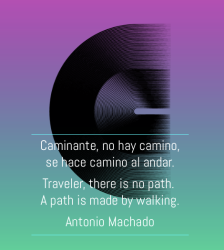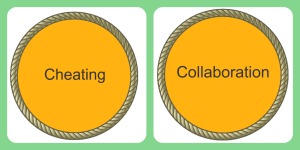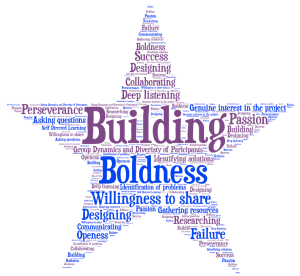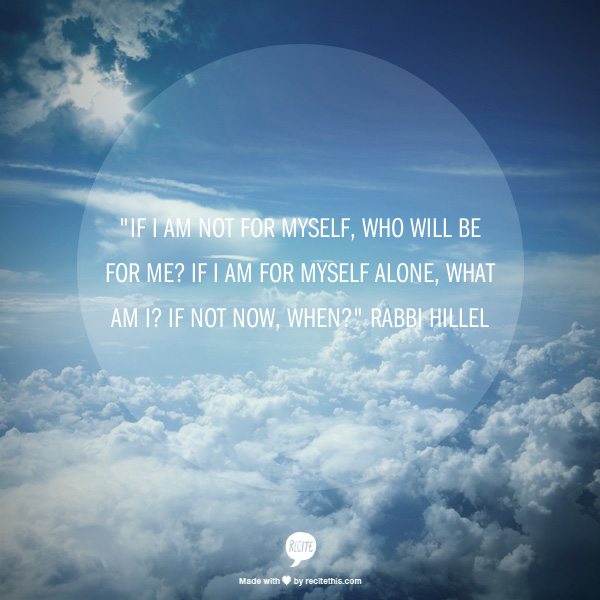This summer I was co-teaching and co-learning in 5 Habits of Highly Creative Teachers. I’m not sure where the teacher ends and the learner begins, but this was an open online course and such is the nature of learning in many online learning communities. Many of us have long ditched the top down hierarchy of traditional classrooms allowing us all to become creators of our own potentially vast and complicated ongoing learning environments. If you have not been following the course, you can read more about it here.
As the course consisted of five modules with five different guides, the team- Tracee, Strawberrry, Cathleen, Melissa and I agreed that we would all try to reflect on the experience, but I put that off until the time felt right. Sometimes a little distance and letting what we’ve learned bake in helps us make sense of our experiences. In addition, as I approach the 3 year mark for my teaching “sabbatical” and as school starts again in August and September in many parts of the world, the time feels right. As an educator, it’s is a great time for me to reflect on the past, be in the present and plan for the future.
Getting Feedback
I was the “guide” in last module which was on reflection, and each of our modules integrated a feedback mechanism which consisted of a quiz at the end of the module. This generated some quantitative and qualitative data and in order to help me sort out “what the heck just happened with reflection”, I made a presentation of charts/graphs and added ideas/questions.
Since I put together the presentation, I’ve been able to synthesize some of my thoughts on teaching and reflection. Here follows some of the salient items that appeared in the data and that kept lingering in my mind and coming back to me.
The Data
The following items were what stood out in the data that I sorted out.
- More participants read all the content than participated in the online discussions
- A large majority of participants reflect in isolation via their own observations/self-talk/journaling/writing
- Reflection is generally not done for its own sake or as a means of self expression, but rather done to improve/get better or with a specific goal in mind
- Most educator/participants didn’t say that they value or use their own reflection as a model for student self reflection
- Teachers need the support of their tribe (s)
- Teachers need to feel that they are not alone
I would be overgeneralizing if I said that educators are passive consumers of content, reflecting in isolation, unaccustomed to modeling their own deeply personal reflection process with their students/peers and who yet desperately need the support of their tribe and collaborative teaching/learning opportunities to battle both the internally and externally imposed demon of aloneness and to bring about a radical change in the teaching profession.
I know many educators are not “that educator.” I was “that educator.”
My Personal Experience
Recently when I was teaching overseas at an international school from 2008-2011, I had the opportunity to collaborate with some great colleagues in both the Romance Language Department as well as in the English B department where we put together units of inquiry for the IBMYP. It was always a very intense experience and we were all eager to create the perfect unit and to improve and continuously tweak our practice/curriculum. In my opinion and in my recollection, here’s how I did reflection:
- Collaborated within my departments to talk about what went well and what didn’t when there was time
- Constantly looked for new and creative ideas to teach and shared them with others when possible
- Received feedback from students at the end of the course and considered it (sometimes)
Here’s where I didn’t scratch the surface:
- Actively seek out student input on what went well and what didn’t in the moment that the learning/instruction was taking place as opposed to the end of the course/unit
- Model reflection for my students. For example, at the close of a lesson, think out loud about what I learned and seek student’s input on what they learned
- Observe colleagues teaching (except during required evaluation time)
- Film myself teaching in order to get feedback through observation as well as others’ input
- Look for opportunities to co-teach classes to tap into the potential of teachers’ complimentary strengths and as an enhanced learning opportunity for both teachers and students
- Participate in a creative process with my students as a student
- Delve really deeply into my weaknesses as a teacher and identify concrete ways to improve by soliciting the help of fellow teachers
As a teacher I lived the feeling of “never having enough time and never being enough.” Educators continue to suffer from time restraints coupled with curriculum demands that perhaps don’t allow for this level of engagement and peer and student collaboration.
The gap between what we know and where we want to be remains. The school “schedule” and “curriculum” goals need a huge overhaul in order to allow for a new kind of teaching and learning to emerge.
PD-Where Do We Go From Here?
Although I have no concise answers, listening to this talk on EDchat radio confirmed to me that professional development for teachers and the direction it is heading is on the minds of teachers as well as administrators. The bottom line is that teachers are not learning by observing other teachers on a regular basis. In addition, concerns were voiced that much like students in the traditional classroom, educators are passive consumers of professional development but now need to be engaged in a more active style of learning that allows them to network and collaborate as well as share and do activities with their peers.
In addition, as a communal call to speech and action, I would like to share a few thoughts about being”silent” as opposed to reflecting out loud that I recently discovered in Audre Lorde’s “The Transformation of Silence into Language and Action.”
1. If it’s important it’s worth saying regardless of feedback or support.
“I have come to believe over and over again that what is most important to me must be spoken, made verbal and shared, even at the risk of having it bruised or misunderstood.”
2. If a concern lingers and continues to come back, it need to be voiced.
“What are the words you do not yet have? What do you need to say? What are the tyrannies you swallow day by day and attempt to make your own, until you will sicken and die of them, still in silence?
3. When we talk about what’s important to us and what we think, we engage in a dialogue with the world that allows learning about ourselves and others to take place.
“…the transformation of silence into language is an act of self-revelation…”
Although these excerpts were written for a different time and purpose, its message resonated with me about what we as educators aren’t saying aloud (or aren’t allowed to say or allowing ourselves to say) and how by not speaking up/reflecting out loud, we are not allowing our whole selves to unfold.
And if we do not engage in an ongoing endeavor to speak and act upon that which unfolds and opens us, then how can we expect that from our students?

















